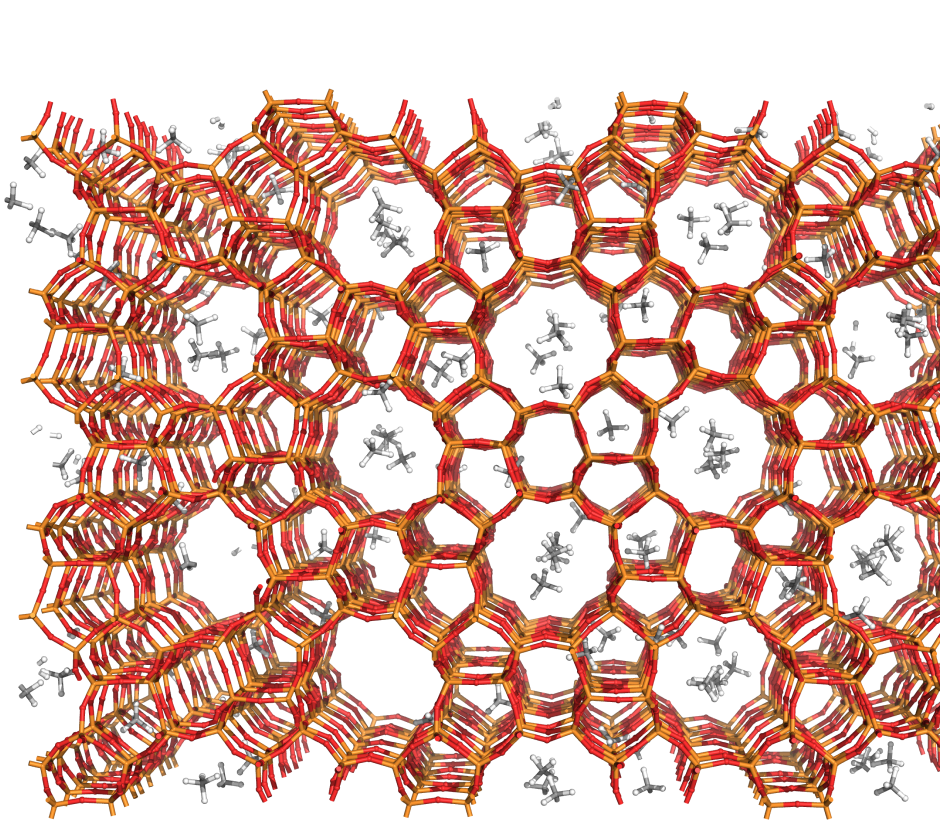MS Penetrant Loading
Molecular dynamics (MD) modeling for predicting water loading and small molecule gas adsorption capacity of a condensed system

Molecular dynamics (MD) modeling for predicting water loading and small molecule gas adsorption capacity of a condensed system

MS Penetrant Loading allows simulations of the loading of a condensed system such as a polymer, zeolite, or molecular solid by a small rigid molecule, such as water or methane. The calculation provides a measure of the hygroscopicity or loading capacity of the condensed phase. It runs Grand Canonical Monte Carlo (GCMC) simulations in Desmond, allowing for the combination of Monte Carlo and molecular dynamics (MD) for substrate relaxation. This results in more realistic loading while allowing for the quick screening of materials for equilibrium adsorption.

Discover how Schrödinger technology is being used to solve real-world research challenges.
Get more from your ideas by harnessing the power of large-scale chemical exploration and accurate in silico molecular prediction.
Get answers to common questions and learn best practices for using Schrödinger’s software.

Learn more about the related computational technologies available to progress your research projects.
A modern, comprehensive force field for accurate molecular simulations
High-performance molecular dynamics (MD) engine providing high scalability, throughput, and scientific accuracy
Efficient molecular dynamics (MD) simulation tool for predicting liquid viscosity and diffusions of atoms and molecules
Atomistic simulation and analysis of charge mobility in solid-state films of organic semiconductors
Efficient coarse-grained (CG) molecular dynamics (MD) simulations for large systems over long time scales
Browse the list of peer-reviewed publications using Schrödinger technology in related application areas.
Level up your skill set with hands-on, online molecular modeling courses. These self-paced courses cover a range of scientific topics and include access to Schrödinger software and support.
Learn how to deploy the technology and best practices of Schrödinger software for your project success. Find training resources, tutorials, quick start guides, videos, and more.